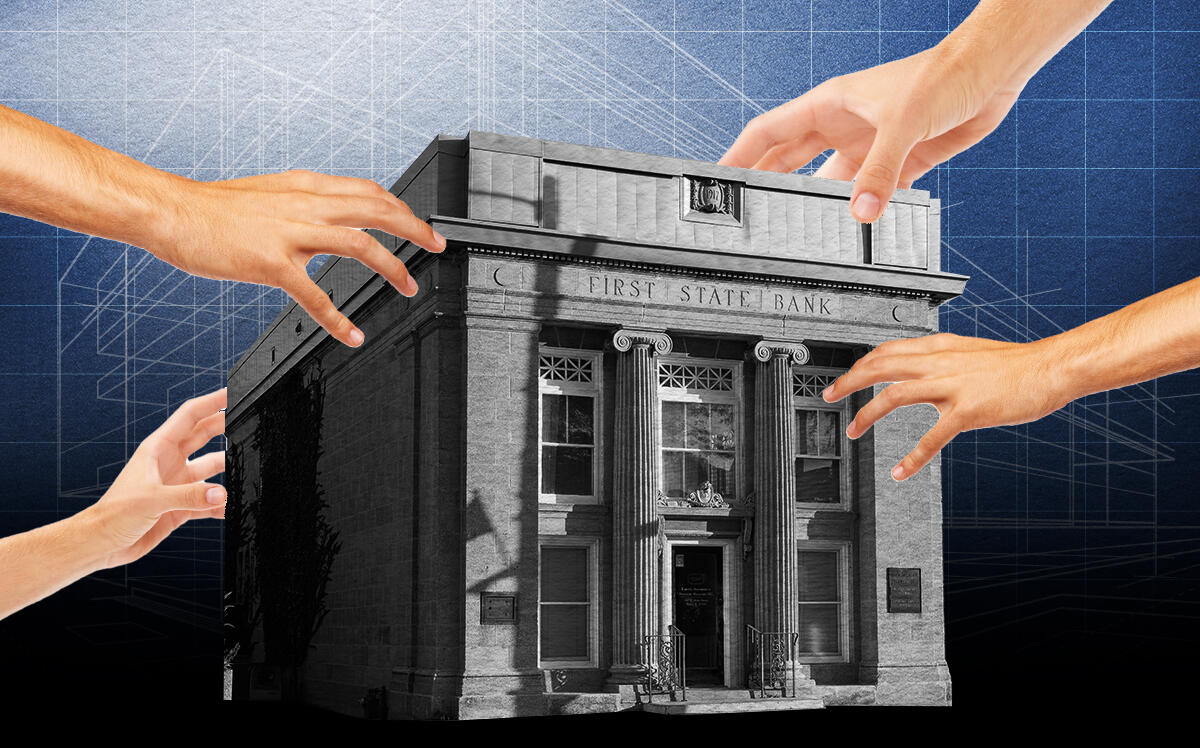At the base of Brooklyn Tower, the borough’s first supertall condo, sits the century-old former Dime Savings Bank, a landmarked structure that Michael Stern’s JDS Development is incorporating into the project’s 100,000-square-foot retail component.
Though few projects rival that one in terms of scale, the 93-story skyscraper was a precursor to a growing trend: Developers are scooping up abandoned bank branches across the country and converting them for housing, coworking and other uses.
More than 4,500 bank branches have closed in the U.S. since the onset of the pandemic, Insider reported, citing data from CBRE and the National Community Reinvestment Coalition. That accounts for about a third of the 14,000 that have closed since 2010, and with construction costs making conversions more attractive than ground-up projects, developers are seizing the opportunity.
“Adaptive reuse projects are tricky,” Scott Goldman of Baum Revision, a Chicago-based developer that specializes in conversions, told Insider. “But banks offer something that a lot of other property types don’t, which is solid infrastructure.”
WeWork unveiled plans in September to turn the 12-story Bridgeview Bank building on Chicago’s North Side into coworking space. Edward-Elmhurst Health and JTS Architects teamed up in March to convert a vacant American Chartered Bank in the Chicago suburb Downers Grove, Illinois, into a drive-through health care clinic.
In Oklahoma City, local developer Gardner Tanenbaum is converting the Tradesman’s National Bank building in Oklahoma City into 135 market-rate apartments, while maintaining many of the 100-year-old building’s original features. PNC Bank, meanwhile, donated one of its branches in Warren, Indiana, to a non-profit — a deal that will provide a retail and commercial complex for local businesses and a likely tax break for the banking giant.
The trend of turning abandoned banks into conversion projects comes as the U.S. faces a widening housing shortage that predated the pandemic, but more opportunities to meet the demand could soon arise. Of 71 financial institutions surveyed by CBRE in August, half said they plan to downsize their real estate footprints in the next three years. Among them the nation’s fourth-largest bank, Wells Fargo, which says it’s “continuing to reassess its real estate portfolio” after shutting down 267 branches over the last 12 months.
— Pat Ralph
Read more


